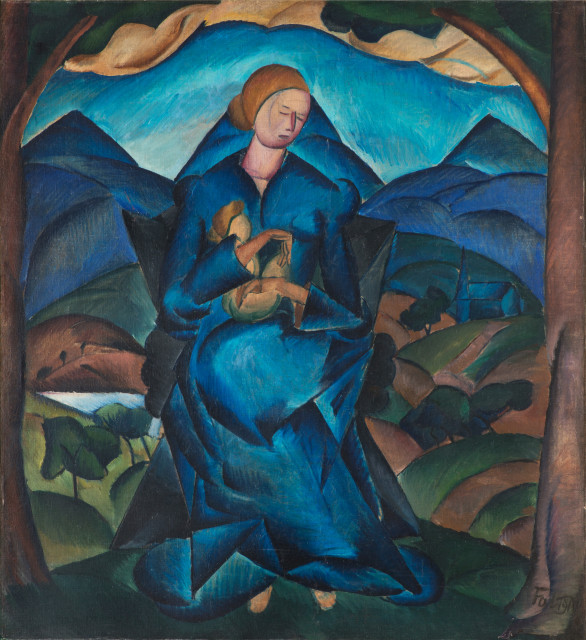
Aleš South Bohemian Gallery
Košice Modernism – Interwar Art Contexts

The art of 1920s Košice, known as Košice Modernism, constitutes an important chapter in the art history of Slovakia and Central Europe as a whole. Following the establishment of the Czechoslovak Republic, many domestic as well as international artists found suitable conditions for their work in Košice, a city of multiple cultures and nationalities. For a period of time, the city became a hub for artists from Hungary, Romania, Czechoslovakia and other countries, who had previously studied in Budapest, Munich or Paris and subsequently moved on to other major European cities. 1920s Košice thus became a regional, but nevertheless important counterpart to avant-garde centres such as Paris and Weimar.
The East Slovak Museum comprised the primary source of systematic – and ultimately successful – efforts designed to support culture and the arts. The museum director, the Czech lawyer Josef Polák, played a significant role in the implementation of numerous exhibitions His additional noteworthy initiatives include the establishment of drawing courses, held at the museum from 1921 to 1923 under the leadership of the Budapest graphic artist Eugen Krón. The beginnings of many artists who subsequently achieved significant recognition may be traced to the Krón school. Key protagonists of Košice Modernism included Anton Jaszusch and Konštantín Bauer while avant-garde artists Gejza Schiller, František Foltýn and Alexander Bortnyik were based in the city for a limited period of time. Leading Hungarian artists such as Károly Kernstok, János Kmetty, Béla Uitz and many others likewise visited and exhibited in Košice. The 1920s arts scene was also significantly influenced by the work of Konštantín Kövári-Kačmarik, one of the first artists to formulate a modern fine arts programme. The “diversity of temperaments” (Josef Polák) was interlinked by a common social and ideological platform and the shared assertion of the topical impulses of European modernism, individually modifying the influences of symbolism, expressionism, cubism, futurism and constructivism.
An important aspect of Košice Modernism was its thematic focus on the urban environment coupled with a significant social component. The rich tradition of the Košice artistic environment, which culminated in the 1920s, was immediately followed up by the work of Július Jakoby and subsequently Juraj Collinásy (both students of the Krón school) who cast aside artistic convention to draw inspiration from the contemporary streams of European modernism.
(Source: Aleš South Bohemian Gallery)